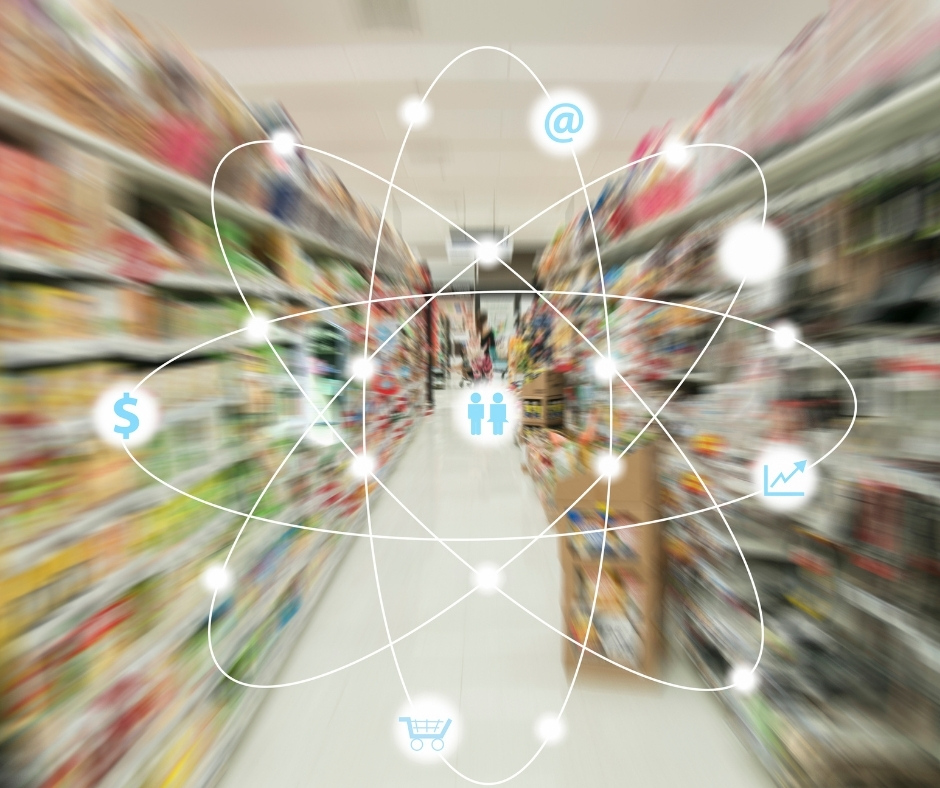
By Laura Davis-Taylor, Chief Strategy Officer, inReality
I started a consulting firm 17-years ago called Retail Media Consulting, the goal of the group to help traditional retailers embrace the rich opportunity for their stores to connect with shoppers as a relevant, revenue-generating media option. Back then, it made all the sense in the world to me that it was one of the best places to ‘reach’ people utilizing the best practices of online media marketing–digital signs were coming of age and we could finally use technology to test, learn and maximize our messages. Coming from the ad agency business, I’d been part of the Internet media onset and resulting success and it just made sense.

Why didn’t it happen? Lots of reasons, and the experiences I had with an amazing leadership team at Lowe’s and twenty of their top CPG partners motivated a book that I co-authored, and every bit of it is still relevant. Reclassifying something that’s worked in a very specific and ingrained process for almost 100 years is a massive change management effort, and addressing it takes work and open minds. Now, with broadcast TV spiraling from mass to one-to-one and Amazon enjoying $1.9 billion in cross channel advertising a year, it appears that retailers are getting the memo on the latent opportunity to drive ROI beyond sales margins.
From my guerilla conversations, almost forty retailers are either waving or making ‘store as media’ flags, either publicly or privately. The carrot is the big bucket of above-the-line TV broadcast spending, as it is rapidly declining and needs a new place to go, and what better place than a store that has tons of warm bodies and the ability to see a message and take the bait right in the shopping basket? But we have to step back and really consider the two worlds that are colliding to make this happen. Madison Avenue agencies have never worked in shopper marketing, and vice versa. Retailers don’t want their trade marketing moving into new store media opportunities, they want above the line media funds adding on to the trade marketing coffers. But they didn’t realize that when they coined it ‘media’ and asked that world to play ball, there were expectations attached to it. To make sense of this, let’s look at the different classifications of media.
Traditional Media:
- The model: Reach (how many people) x Frequency (how often) = Awareness
- Traditional, i.e., TV broadcast, print, radio, and outdoor, was based on reaching eyeballs and message repetition to secure awareness. It was never an exact science regarding measurement, so the industry relied on things like Nielson and circulation numbers to figure out how many people were exposed to a message. Effectiveness was most often gauged via brand benchmark studies and how many people could recall a brand’s ad or message in an area the media people were sending it out in.
Direct Media:
- The model: (Targeted) Reach (how many people) x Frequency (how often) = Response
- This media evolved with a higher purpose: measurable response generation. With it, media planners were strategically seeking out very specific people that were most likely to buy the product they were trying to get in front of them. Its acceptance was lukewarm for many years, but as consumers became more elusive and tech driven, it slowly became the foundation of almost all modern day marketing.
Interactive Media:
- The model: Reach (how many people) x Frequency (how often) = Response (they did or didn’t do something)
- See (impression)
- Dwell (spend time looking or considering)
- Engagement (explore further)
- Purchase (buy)
The interactive (or internet-based) marketing opportunity created an entirely new beast. When it first emerged the industry first saw it as a traditional media play and measured it via “page views” or “impressions.” That was all that we could do! As it evolved, our media uses for it did as well — and so did our ability to measure it. In fact, our interactive planning, placement, and reporting tools are now so robust, they are the most measurable media of the entire toolkit.
Like direct media, interactive media is often targeted. But how it is used is ultimately driven by the business goals of the brand and the desired consumer response.
Which leads us to the ideal store media model…
Reviewing the media buckets above, one could assume that in-store media is also a new media beast that will enable its own unique use cases. But actually, it’s not that different from online marketing–it’s just physical versus virtual. Think about it, we want to attract people to an area of interest (traffic), get them to hang out and look/consider (impression/dwell) and hopefully do something like touch, pick up or taste (engage) or buy (convert). Could we gather more metrics and cut them by things like gender and age? Sure. But having the basics of traffic, impression and dwell and openly sharing them with the brand advertiser would give them two things that they have never had from stores before but want desperately: (1) shopper behavior insights and (2) the ability to optimize.
The big hurdles:
- Planning and buying. Media people use digital tools to plan and buy their ad placements. Online media didn’t take off until DoubleClick did, as it made it easy for them to scan the possibilities, place the buys, report on the results and offer up recommendations for optimizing the outcomes. Many stores are building their own platforms for selling store media inventory to brand advertisers and agencies, but unlike many online platforms, they aren’t programmatic. If everyone builds their own platform and they require humans versus tech to make the buying choices (which is what programmatic does), it’s going to take a lot more time and effort to plan and place buys across all of the stores selling media space in their brick and mortar.
- Measurement. in the words of a former P&G client, “we fund well what we measure well.” When you say media, it means you can measure—especially if you own the space and it’s physical. When I started on this journey, we could not measure people at scale. Now we can. If stores want above the line investment from brand advertisers, they need to measure at least the basic metrics that we measure online—traffic, dwell and engagement. Without it, there’s no way to understand if the message is or is not resonating, then act accordingly.
- Appointing an empowered ‘owner’. Many in-store challenges are tied to not having one person that ultimately makes the call on what happens within it. There are lots of chiefs, which means lots of people and opinions to align together. It’s the reality of retail, but it’s a grind when a major new initiative needs quick traction. There is, however, an increase in Chief Experience Officer and Chief Digital Officer appointees, which is very encouraging, as these people have the consumer-first, test/learn/optimize approach that helps anyone in the store ecosystem win the ultimate prize: sales and loyalty.
- Making it synchronize strategically with mobile. As 5G, edge computing, lower cost internet access points and more powerful phones come together, we have a never-before-seen opportunity to ensure that the mobile phone is a powerful media option inside of our retail stores. We have to tread carefully, however, due to how far we go regarding personalization. One-to-one should be about opt-in, not blatant opportunity–just because we can target people as they go about their lives doesn’t mean that we should invade their intimate space without asking. Earn their trust, then figure out how a personal offer or message can not only add value to the mulit-sensory store experience, but create a killer attribution method to track response.
We are at the beginning of a lifelong learning process with store media. The challenges — and opportunities — of embracing it may require some change management, but it’s opening the door to a rich new revenue stream, a better customer experience and the ripe promise of in-store optimization. If, that is, we address the big barriers that are slowing it down. Let’s make it happen, as there’s nothing but upside if we do it right.
Related Articles

Laura Davis-Taylor
“LDT” has been focused on creating meaningful retail experiences that bridge home, life and store for over 25 years. Her experience is multifaceted, ranging across brand planning, digital engagement, store design, CX, behavioral analytics and retail innovation. She believes passionately that good brands do not make promises—they deliver experiences in unique and compelling ways, human-focused but backed by proven business results. With this philosophy, she has worked with brands such as AT&T, Toyota, Walmart, Best Buy, Coke, L’Oréal/Lancôme, Lowe’s, Office Depot, Foot Locker, 7-Eleven, EJ Gallo and Unilever.




